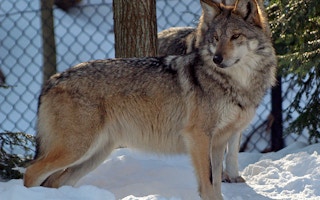Building the wall that Donald Trump has ordered on January 25th, as one of his first actions as US president, will put on risk more than 50 animal species that share the ecosystem along the border between the United States and Mexico, scientists from various countries have warned.
Since 2006, 1,100 kilometers of barriers covering more than 30 per cent of the border between the countries have been built. The newest executive order commands the “immediate construction of a physical wall”, stating that ‘wall’ means “a physical barrier, continuous and impassable”.
“It will be a big problem for wildlife”, says Jesse Lasky, researcher at Pennsylvania State University in the United States and author of a 2011 study warning that more than 50 species were endangered because of the existing separation.
The study also warned that this number would increase if the barriers expanded — they are currently irregular, in various sizes and shapes.
Lasky explained to SciDev.Net that separating the ecosystems of these arid areas along the border puts animals at risk because it obstructs their access to water and mating behaviour; it also reduces their hunting ground, obstruct the recolonisation of certain areas and reduces the genetic diversity of separated species.
The cougar, the Mexican wolf, the black bear and the porcupine are some of the endangered species along the border.
“
People in desperate situations appeal to ingenious solutions to hoax the barriers, but animals couldn’t do the same.
Jamie McCallum, Transfrontier International
There is evidence that the wall has not prevented the movement of undocumented people cross the border. A British study published in 2014 concluded that the wall restricts the movement of animals, but not people.
“We saw that the number of people crossing dwarfed the number of animals”, said Jamie McCallum, founder of the consultancy company Transfrontier International and author of the study, in an interview with SciDev.Net.
“It seemed that the wall was causing damage to everything it shouldn’t, and was not disturbing what it supposed it should; it was like having the worst of both worlds!” McCallum recalled that people in desperate situations appeal to ingenious solutions to evade the barriers, but animals couldn’t do the same.
Rurik List, ecologist of the Autonomous Metropolitan University in Mexico, who has studied the border since 1993, confirmed to SciDev.Net that an impenetrable wall will have severe additional consequences by restricting the movement of animals trying to adapt to climate change.
Lasky expressed the same concern, citing changes in the hydrological patterns of the area.
“We have seen how bisons break the barbed wire when crossing the border, allowing smaller animals to pass. Now [with a built wall], this won’t be possible anymore”, concludes List.
This piece was produced by SciDev.Net’s Latin America and Carribean edition.

















